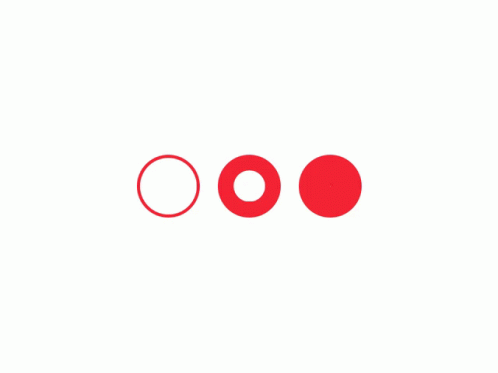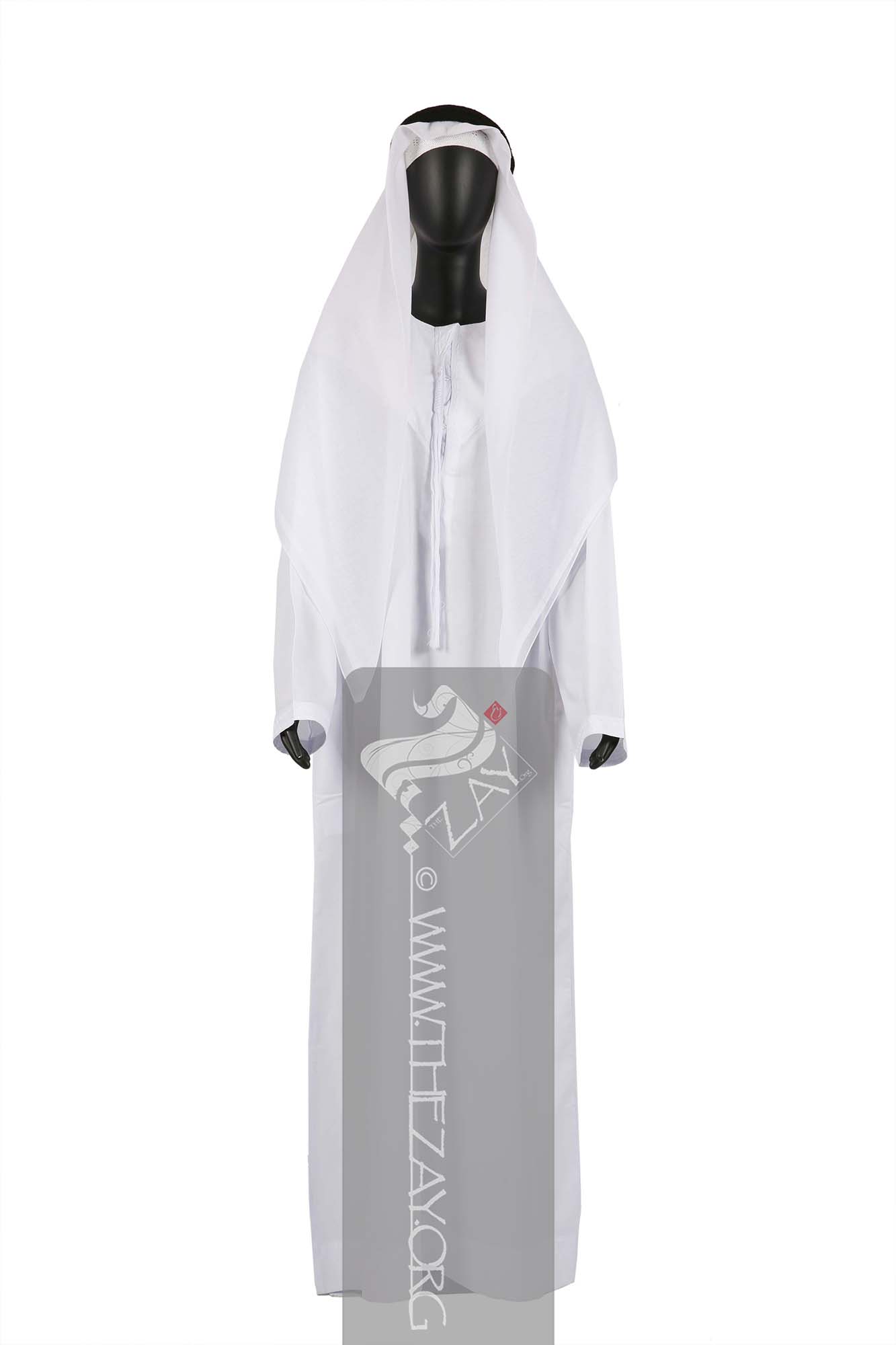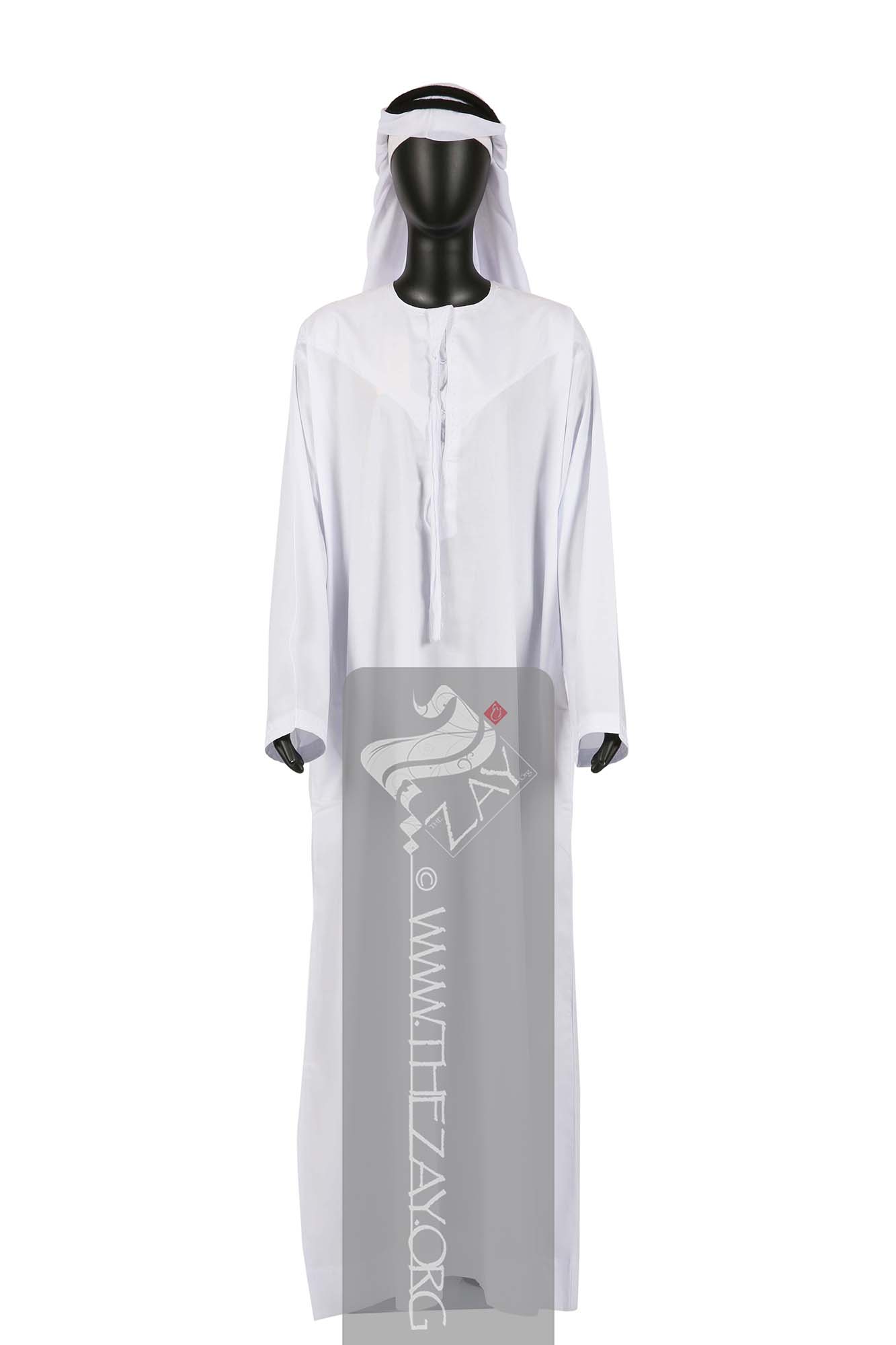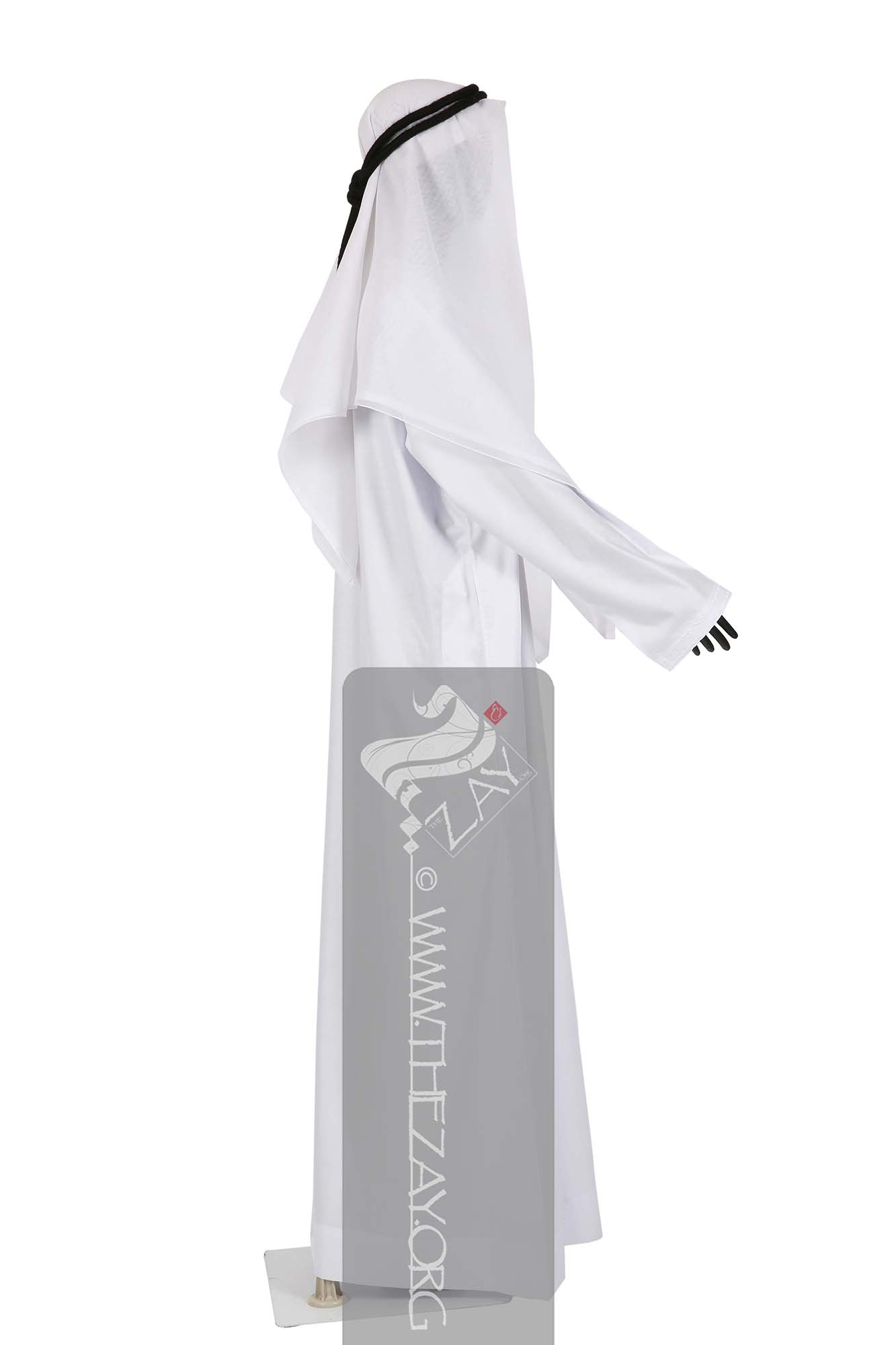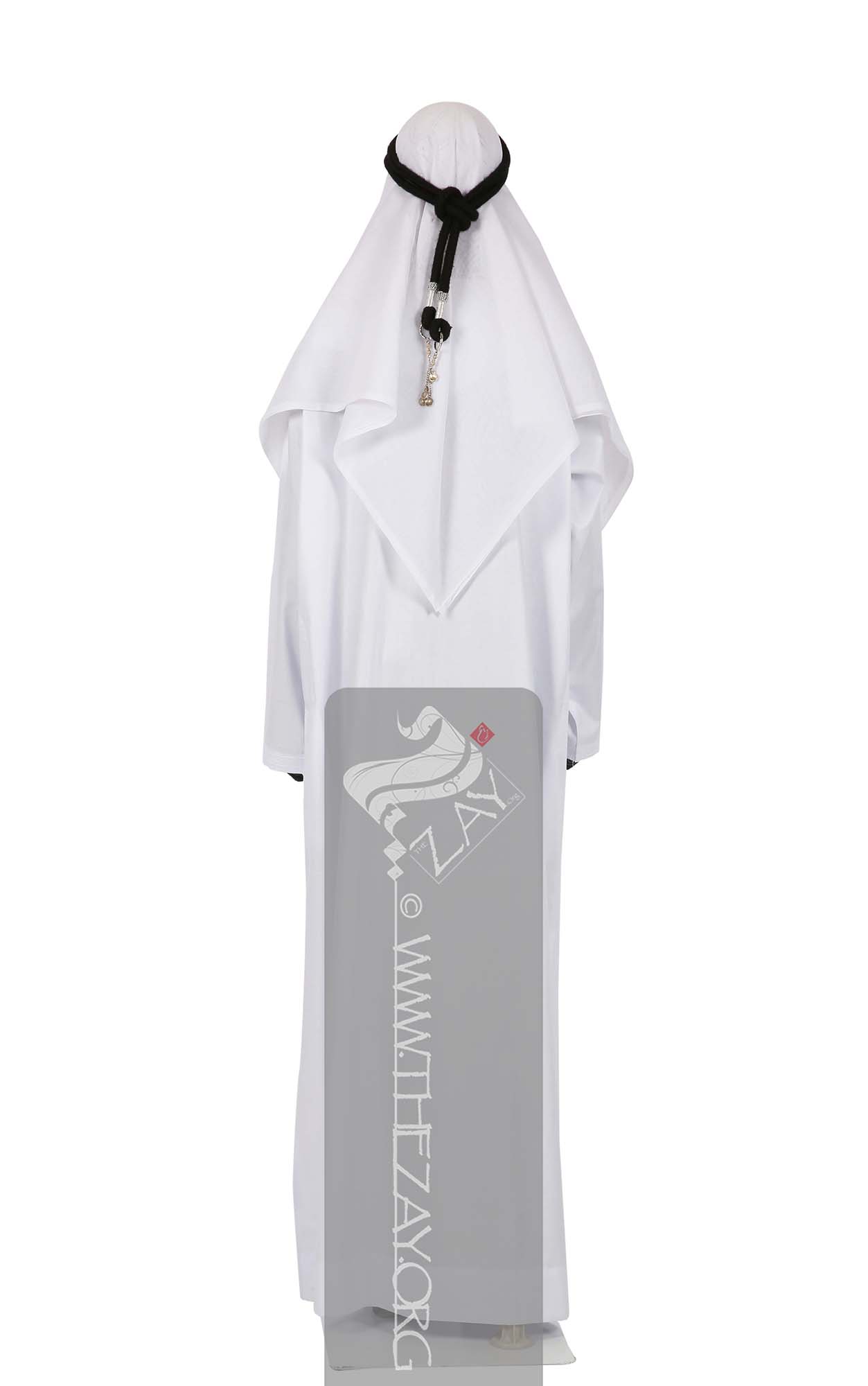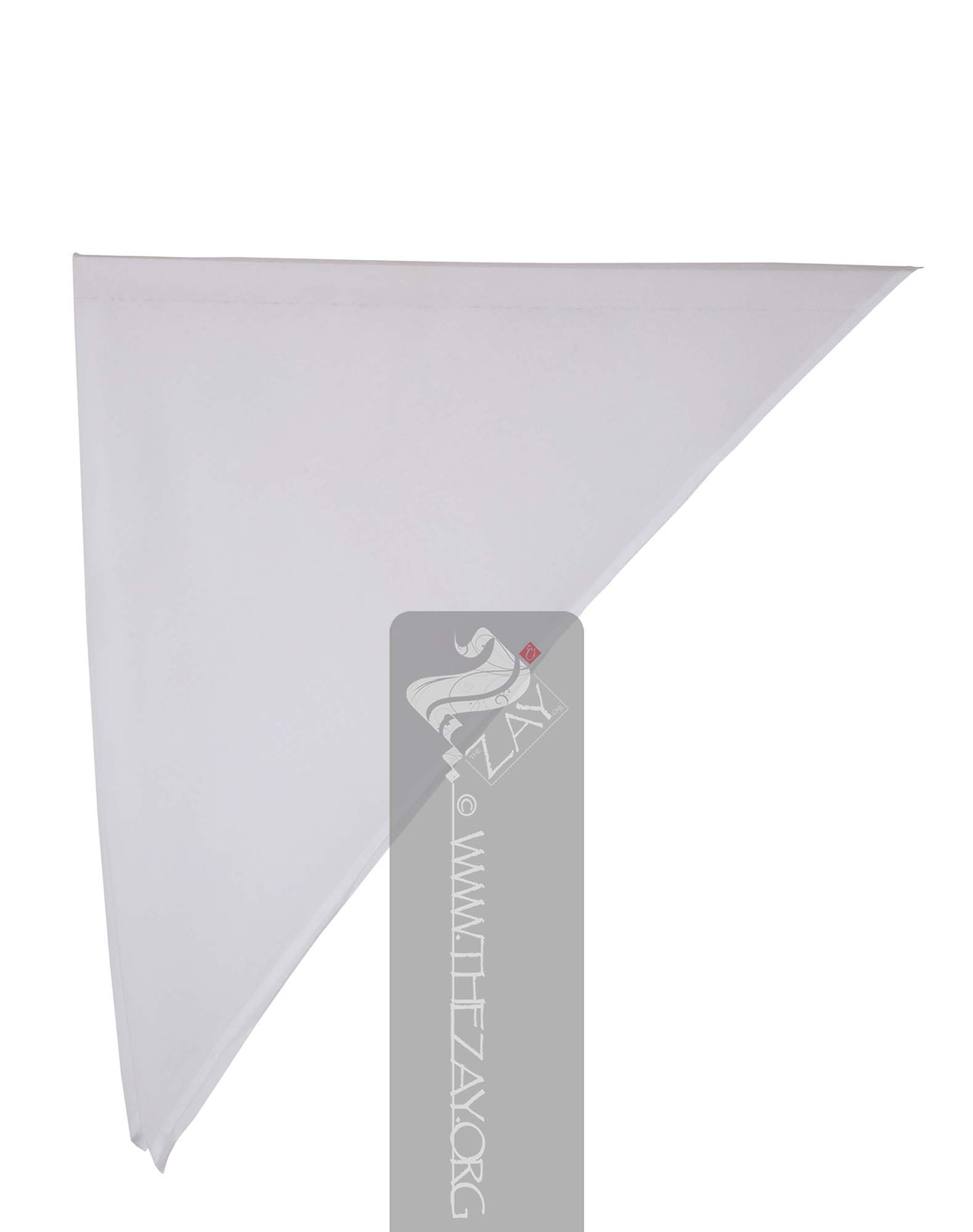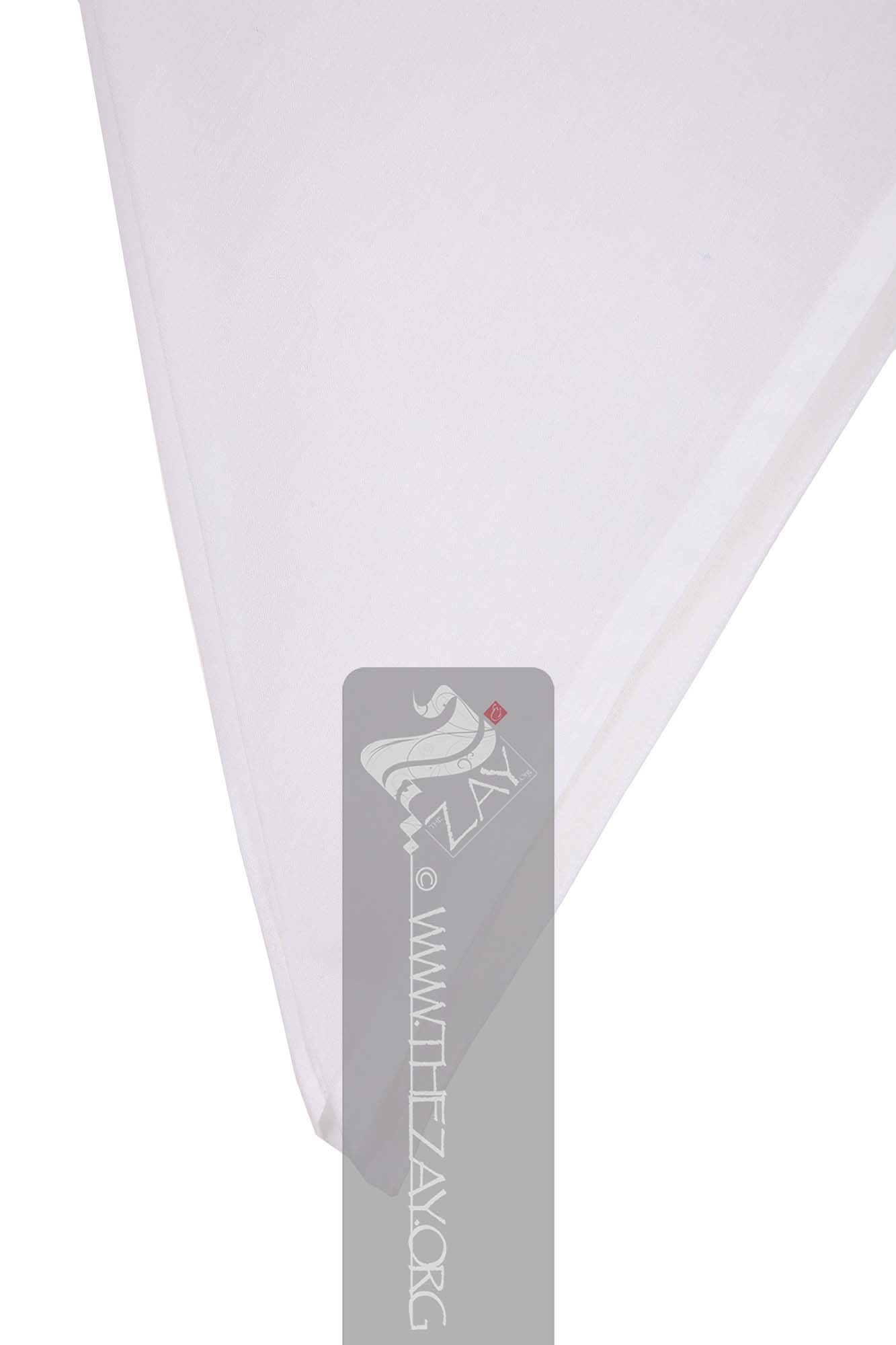Object History Dr. Reem Tariq
Ṭariq: (Arabic; Synonym: tulle_bi_talli
Tūlle_bi_tallī: (French: Tulle – a city in France where fine material for veil was first made; Turkish: tel – wire; Synonym: tariq; talli; badla; khus_dozi ), series of small metal knots made on a woven net ground as embellishment. The term is commonly used in the North African Arab region specifically in Egypt.
; talli; badla; khus_dozi ), series of small metal knots made on a woven net ground as embellishment. The term is commonly used in the Levant Arab region specifically in Lebanon.
El Mutwalli
Dr. Reem Tariq
Ṭariq: (Arabic; Synonym: tulle_bi_talli
Tūlle_bi_tallī: (French: Tulle – a city in France where fine material for veil was first made; Turkish: tel – wire; Synonym: tariq; talli; badla; khus_dozi ), series of small metal knots made on a woven net ground as embellishment. The term is commonly used in the North African Arab region specifically in Egypt.
; talli; badla; khus_dozi ), series of small metal knots made on a woven net ground as embellishment. The term is commonly used in the Levant Arab region specifically in Lebanon.
el Mutwallī: Founder (CEO) of the Zay
Zay: (Arabic: costume, Pl. azyaā’), a set of clothes in a style typical of a particular country or historical period. Initiative, a public figure, speaker and author. An expert curator and consultant in Islamic art and architecture, interior design, historic costume, and UAE heritage., The
Zay
Zay: (Arabic: costume, Pl. azyaā’), a set of clothes in a style typical of a particular country or historical period. Initiative founder was initially contacted on Instagram by Mariam Khalfan Mohammed Khalifah al Maydi al Badwawi, who offered to volunteer and help source old artifacts from the northern Emirates for the
Zay
Zay: (Arabic: costume, Pl. azyaā’), a set of clothes in a style typical of a particular country or historical period. Collection. Mariam has been an invaluable addition to our team, as she connects easily with people and patiently explains our role, convincing others to help the cause. This (
kandurah_arabiyah
Kandūrah_‘arabīyah: (colloquial Emirati term), coined post 1990s, to refer to the qamīs-like tunic with vertical slit located on the left side of the neckline extending down the chest. The origins of this slit are believed to lie in the Punjabi (kurta
Kūrtā: (Urdu and Persian: kurtah
Kurtah: (Urdu and Persian: kurta, synonyms: bīchī, gawan, fustān, nafnūf, kirtah), a loose sleeveless shirt of varying lengths, typically falling either just above or somewhere below the knees, with its side-seams left open at the bottom, worn in South Asia, usually with a salwar
Salwar: (Farsi: shalvār; Synonym: ṣarwāl, shirwāl ), trousers featuring tapering ankles and drawstring closure of Central Asian origin. They disseminated in the Indian subcontinent between c.1st-3rd century BCE. Although exact period of its arrival in the Arab world is disputed their widespread adoption is confirmed from the 12th century.
, churidars, or pyjama. In Hijazi dialect, the term refers to a sleeved, waist-cinched dress that comes in different styles, popularly worn since the 1950s.). a sleeveless shirt of varying length, typically falling either just above or somewhere below the knees of the wearer, with its side-seams left open at the bottom.) and is generally fastened using cotton thread ball-like buttons ('igham), or metal snaps (siq_w_bic) which were subsequently replaced by transparent versions.ly replaced by transparent versions. khwar_zari) is one of her finds.
Mariam came across this article together with a few more from the late Mohammed ‘Ayish al Qaydi, who passed away in the 1990s. Fortunately, his family had luckily held on to the items and were willing to sell them to The
Zay
Zay: (Arabic: costume, Pl. azyaā’), a set of clothes in a style typical of a particular country or historical period. Initiative.
Object Features The general term used for this article of clothing is (
ghutrah
Ghutrah: (Arabic: qatrah: hunting lodge, synonyms: kūfīyah, shmāgh, haṭṭah, mshadah
Mshadah: (Arabic: shadda: tied tightly, synonyms: kūfīyah, shmāgh, ghutrah, ḥaṭṭah, qaḍāḍah, jamadānah), a large square piece of woven cotton with white base, folded in half to form a triangle. The folded edge is worn across the forehead. It often has geometric embroidery in a square-like pattern, the most famous being red and black. Worn in the Levant, Iraq, and the Arabian Gulf., qaḍāḍah, jamadānah), a large square piece of woven cotton with white base, folded in half to form a triangle. The folded edge is worn across the forehead fastened by a cord (‘iqal) and draped off the shoulders. It often has geometric embroidery in a square-like pattern, the most famous being red and black. Worn in the Levant, Iraq, and the Arabian Gulf.) or (
kufiyah
Kūfīyah: (Arabic: takwīf: round), a large square piece of woven cotton with white base, folded in half to form a triangle. The folded edge is worn across the forehead fastened by a cord (‘iqal) and draped off the shoulders. It often has geometric embroidery in a square-like pattern, the most famous being red and black. Worn in the Levant, Iraq, and the Arabian Gulf and known as (shmāgh), (ghutrah), (haṭṭah), (mshadah
Mshadah: (Arabic: shadda: tied tightly, synonyms: kūfīyah, shmāgh, ghutrah, ḥaṭṭah, qaḍāḍah, jamadānah), a large square piece of woven cotton with white base, folded in half to form a triangle. The folded edge is worn across the forehead. It often has geometric embroidery in a square-like pattern, the most famous being red and black. Worn in the Levant, Iraq, and the Arabian Gulf.), (qaḍāḍah), or (jamadānah).), the lighter white cotton format is known in the UAE as (
sufrah
Sufrah: (colloquial: UAE, synonyms: kūfīyah, shmāgh, haṭṭah, mshadah, qaḍāḍah, jamadānah), a large square piece of white woven cotton, folded in half to form a triangle. The folded edge is worn across the forehead fastened by a cord (‘iqal) and draped off the shoulders. Worn in the Levant, Iraq, and the Arabian Gulf.), while the checkered red and white or black and white or other combinations of colour is known in the whole Arab region as (
shmagh
Shmāgh: (Sumerian: ish makh: headcover, synonyms: kūfīyah, shmāgh, haṭṭah, mshadah, qaḍāḍah, jamadānah, ghutrah) a large square piece of white-based woven cotton, folded in half to form a triangle. The folded edge is worn across the forehead fastened by a cord (‘iqal) and draped off the shoulders. It often has geometric embroidery in a square-like pattern, the most famous being red and black. Worn in the Levant, Iraq, and the Arabian Gulf. ), and when it is used to cover the face, it is known as (
ltham
Lthām: (Arabic: cover, veil, or wrapping), refers to any cloth simply wrapped around the head or tied into a knot at the back of the head so that the face is masked at the nose leaving the eyes exposed. ). In winter the men sometimes opt for
cashmere
Cashmere: (Anglisized from Hindustani: Kashmir – A region or province in the Indian subcontinent), a fine soft natural wool, from the hair of goats native to the Kashmir, Ladakh and neighbouring regions of the Indian subcontinent. Often confused with Pashmina
Pāshmīna: (Persian: pašm or pashm – wool), pashmina scarves are eponymous woolen shawls from the Kashmir region with a history dating back to more than 500 years. It is the finest variant of spun cashmere wool extracted from the downy undercoat of the Changthangi goats found in the Ladakh province. , it should be noted that all cashmeres are not pashmina
Pāshmīna: (Persian: pašm or pashm – wool), pashmina scarves are eponymous woolen shawls from the Kashmir region with a history dating back to more than 500 years. It is the finest variant of spun cashmere wool extracted from the downy undercoat of the Changthangi goats found in the Ladakh province. . (
shal
Shāl: (Persian: shāl, derived from Hindi: duśālā), usually a rectangular or square piece of cloth, often folded to make a triangle, but can also be triangular in shape, loosely worn over the shoulders, upper body, and arms, and sometimes also over the head.) versions in order to keep warm.
Covering the head is a daily routine for Arabs since older times, as the
ghutrah
Ghutrah: (Arabic: qatrah: hunting lodge, synonyms: kūfīyah, shmāgh, haṭṭah, mshadah
Mshadah: (Arabic: shadda: tied tightly, synonyms: kūfīyah, shmāgh, ghutrah, ḥaṭṭah, qaḍāḍah, jamadānah), a large square piece of woven cotton with white base, folded in half to form a triangle. The folded edge is worn across the forehead. It often has geometric embroidery in a square-like pattern, the most famous being red and black. Worn in the Levant, Iraq, and the Arabian Gulf., qaḍāḍah, jamadānah), a large square piece of woven cotton with white base, folded in half to form a triangle. The folded edge is worn across the forehead fastened by a cord (‘iqal) and draped off the shoulders. It often has geometric embroidery in a square-like pattern, the most famous being red and black. Worn in the Levant, Iraq, and the Arabian Gulf. served as protection from the sun or sand storms and looked at as a marker of identity.
This (
sufrah
Sufrah: (colloquial: UAE, synonyms: kūfīyah, shmāgh, haṭṭah, mshadah, qaḍāḍah, jamadānah), a large square piece of white woven cotton, folded in half to form a triangle. The folded edge is worn across the forehead fastened by a cord (‘iqal) and draped off the shoulders. Worn in the Levant, Iraq, and the Arabian Gulf.) is a square piece of lightweight white cotton voile. It is customarily folded diagonally into a triangle and placed on the head, or on top of a small white skullcap (
gahfiyah
Gaḥfīyah: (ِArabic, Synonym: ‘araqchīn, ṭāqīyah, gāhfīyah, shāshīyah), a short, rounded, cloth skullcap. It can come in a variety of forms and finishes and is often embroidered, crocheted, or knitted. It is worn by itself or under other head garments, by men throughout the Arab and Muslim worlds. Note: The letter (qāf) is colloquially pronounced (ga).), and maybe worn in different ways: loose, on the sides, towards the rear, or even tied in a knot.
When worn by a young male in the UAE, it is wrapped in a unique turban style and is known as (
hamdaniyah
Ḥamdānīyah: (UAE Colloquial) turban style of wrapping male headdress (ghutra) referencing the late shaikh Hamdan bin Mohammed al Nayhan known to have sported it in the area. ), referencing the late shaikh Hamdan bin Mohammed al Nahyan known to have sported it in the area.
Formally, a
ghutrah
Ghutrah: (Arabic: qatrah: hunting lodge, synonyms: kūfīyah, shmāgh, haṭṭah, mshadah
Mshadah: (Arabic: shadda: tied tightly, synonyms: kūfīyah, shmāgh, ghutrah, ḥaṭṭah, qaḍāḍah, jamadānah), a large square piece of woven cotton with white base, folded in half to form a triangle. The folded edge is worn across the forehead. It often has geometric embroidery in a square-like pattern, the most famous being red and black. Worn in the Levant, Iraq, and the Arabian Gulf., qaḍāḍah, jamadānah), a large square piece of woven cotton with white base, folded in half to form a triangle. The folded edge is worn across the forehead fastened by a cord (‘iqal) and draped off the shoulders. It often has geometric embroidery in a square-like pattern, the most famous being red and black. Worn in the Levant, Iraq, and the Arabian Gulf. is secured by a two-loop coil of black braided cord (‘igal) on top of the head, that is heavy and coarse enough to keep a grip on the
ghutrah
Ghutrah: (Arabic: qatrah: hunting lodge, synonyms: kūfīyah, shmāgh, haṭṭah, mshadah
Mshadah: (Arabic: shadda: tied tightly, synonyms: kūfīyah, shmāgh, ghutrah, ḥaṭṭah, qaḍāḍah, jamadānah), a large square piece of woven cotton with white base, folded in half to form a triangle. The folded edge is worn across the forehead. It often has geometric embroidery in a square-like pattern, the most famous being red and black. Worn in the Levant, Iraq, and the Arabian Gulf., qaḍāḍah, jamadānah), a large square piece of woven cotton with white base, folded in half to form a triangle. The folded edge is worn across the forehead fastened by a cord (‘iqal) and draped off the shoulders. It often has geometric embroidery in a square-like pattern, the most famous being red and black. Worn in the Levant, Iraq, and the Arabian Gulf. and prevent it from slipping. The diameter of the ‘igal is smaller than the head, thus the weight is essential to hold it centred on top of the head. Originally used to hobble camels or cattle, and back in time, it was made of tightly woven black goat hair or sheep’s wool. Some models have one or two long cords with suspended tassels (tarbush) at the rear.
Styling, such as fixing the tip to form a sharp angle symbolising an eagle’s beak, is pretty much the equivalent of choosing which knot to tie a western tie, and is often a marker of identity, for example, the Qatari’s are distinguishable by the style of their
ghutrah
Ghutrah: (Arabic: qatrah: hunting lodge, synonyms: kūfīyah, shmāgh, haṭṭah, mshadah
Mshadah: (Arabic: shadda: tied tightly, synonyms: kūfīyah, shmāgh, ghutrah, ḥaṭṭah, qaḍāḍah, jamadānah), a large square piece of woven cotton with white base, folded in half to form a triangle. The folded edge is worn across the forehead. It often has geometric embroidery in a square-like pattern, the most famous being red and black. Worn in the Levant, Iraq, and the Arabian Gulf., qaḍāḍah, jamadānah), a large square piece of woven cotton with white base, folded in half to form a triangle. The folded edge is worn across the forehead fastened by a cord (‘iqal) and draped off the shoulders. It often has geometric embroidery in a square-like pattern, the most famous being red and black. Worn in the Levant, Iraq, and the Arabian Gulf. known as the cobra, inspired by the snake look, sharp and pointy from the front.
Nowadays, the price of this woven cotton fabric varies depending on the quality of the yarn it is made of, the more the article is processed, the more expensive it will be, with some acquiring international designer labels.

